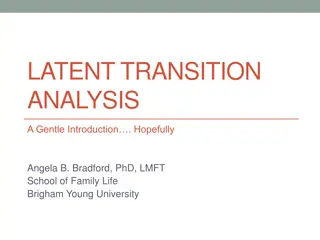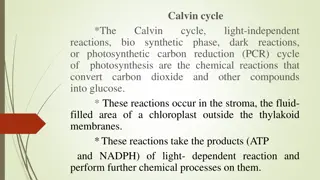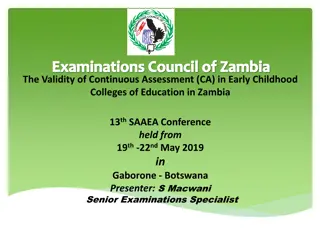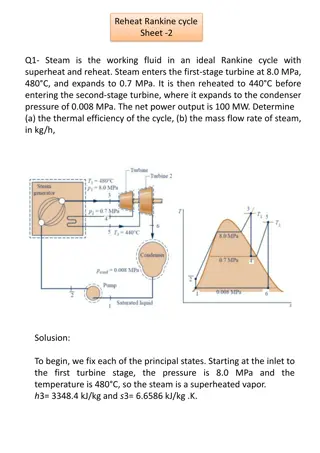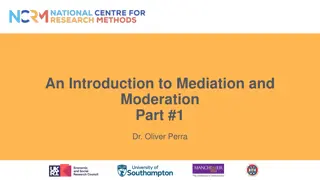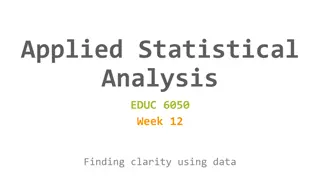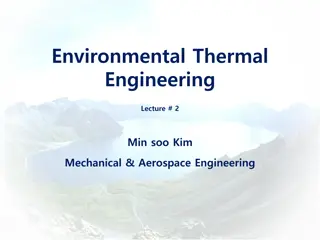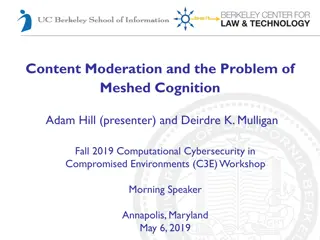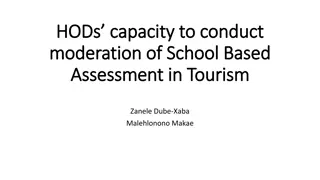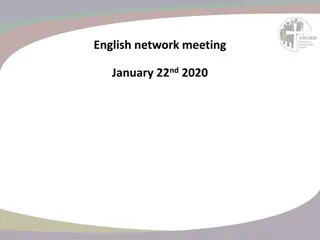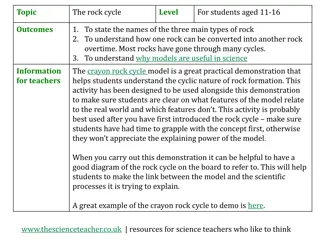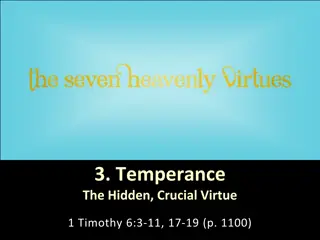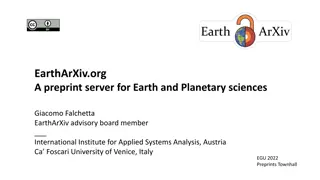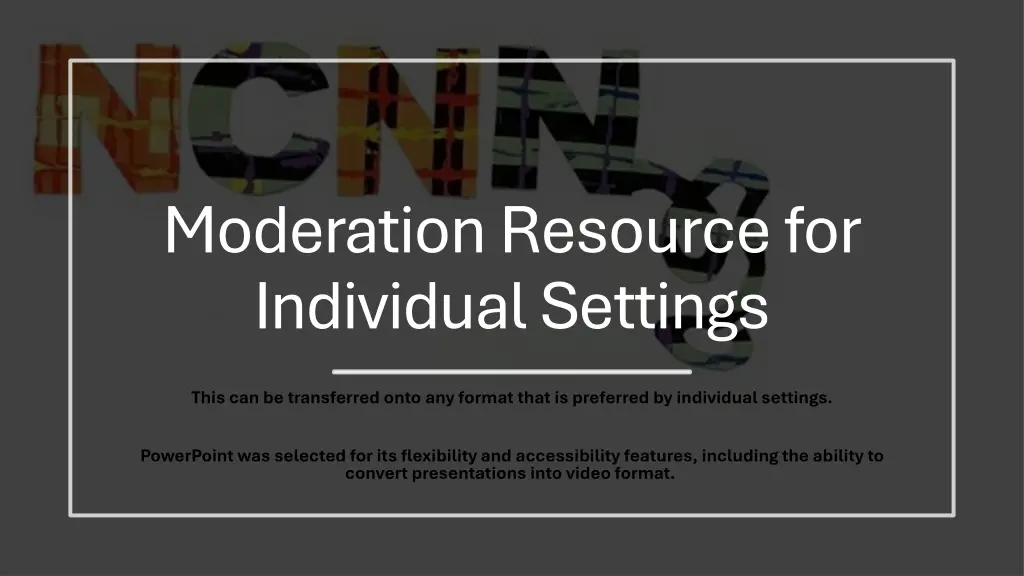
Enhancing Learning Through Individual Settings and Moderation Strategies
Explore the importance of individual settings in education, focusing on moderation resources and person-centered approaches. Learn about creating learner profiles, defining learning intentions, and setting success criteria to optimize educational outcomes.
Uploaded on | 0 Views
Download Presentation

Please find below an Image/Link to download the presentation.
The content on the website is provided AS IS for your information and personal use only. It may not be sold, licensed, or shared on other websites without obtaining consent from the author. If you encounter any issues during the download, it is possible that the publisher has removed the file from their server.
You are allowed to download the files provided on this website for personal or commercial use, subject to the condition that they are used lawfully. All files are the property of their respective owners.
The content on the website is provided AS IS for your information and personal use only. It may not be sold, licensed, or shared on other websites without obtaining consent from the author.
E N D
Presentation Transcript
Moderation Resource for Individual Settings This can be transferred onto any format that is preferred by individual settings. PowerPoint was selected for its flexibility and accessibility features, including the ability to convert presentations into video format.
Moderation within the Learning and Teaching Cycle Education Scotland Education Scotland
Within an ASN setting, ensuring the learner remains at the centre requires thorough planning Within an ASN setting, ensuring the learner remains at the centre requires thorough planning and assessment for learning, which should consider the learner's needs through holistic and assessment for learning, which should consider the learner's needs through holistic profiling. profiling. Learner profiles should include voices from learners, school, partners and families. Learner profiles should include voices from learners, school, partners and families. When creating a profile consider: When creating a profile consider: Needs within these areas: Communication Sensory Transitions Moving & Handling Education Health Care Eating, Drinking & Swallowing Learning Hearing & Vision Emotional Regulation Accessibility
Person Centred Approaches
Add reference to document
What are learning intentions? What are learning intentions? A learning intention for a lesson, or a series of lessons, is a statement, created by the teacher, that describes clearly what the teacher wants the pupils to know, understand, and be able to do as a result of learning and teaching activities. Clear learning intentions should help pupils focus not just on the task or activity taking place but on what they are learning. Learning intentions are always linked to one or more learning outcomes.
What are success criteria? What are success criteria? Success criteria are linked to learning intentions. They are developed by the teacher and/or the pupils and describe what success looks like. They help the teacher and pupil to make judgements about the quality of pupil learning.
Learning, Teaching and Assessment Learning, Teaching and Assessment When planning for learning, teaching and assessment the E&Os should be used along with the continuum of engagement and type of support codes. Assessment should capture bundles of E&Os. High quality assessments provide the learner with the opportunity to demonstrate; breadth, challenge and application in new and unfamiliar contexts. The planning of assessment activities should be carried out at the same time as the planning of learning experiences, identifying learners progress.
High Quality Assessments What to ensure What to avoid They are individualised and needs led They are shaped by the principals of CfE including Pre early and Foundation Milestones They consider the context for assessment They should involve the learner. They are based on collective professional judgement through a triangulation of evidence gathered over time Checklists Constraints to progression An end of unit assessment A large unnecessary amount of evidence
Examples of Assessment Examples of Assessment Observations, photos and videos Appropriate Questioning / Feedback from all stake holders Pupil Voice gathered in a range of ways e.g. verbally captured by learners, adults or family, use of symbols or digital technology. Outcome evaluations Progress / summary report Responsive assessments or reports from professionals or home
Gathering Evidence Gathering Evidence : Be planned for in a personal way. Demonstrate breadth, challenge and application. Evidence the targeted learning not the activity. Relate to the success criteria that has been set. Be varied and gathered over time. Be proportionate and manageable. Be captured in an accessible format.
Evaluation Evaluation Meets the success criteria Appropriate level of challenge Has the learner responded consistently well to challenge and moved on to some aspects of the next level. Knowledge applied from one organiser to another. Demonstrates breadth of learning. Demonstrates application in the new and unfamiliar situations. Standards within, and achievement of, a level.
Feedback Feedback Feedback is linked to success criteria. Learners are clear about what they have done well and what they need to do next to improve. Quality dialogue and/or written comments. Age and stage appropriate. Peer and self feedback.
Reporting Reporting An ongoing process. Provides a clear account of progress against which to base further discussion about learning with the learner, parents and carers, and partners. Clearly stated progress and next steps.
Summary Once completed, this document provides a personalised moderation approach tailored to your setting and aligned with the Learning, Teaching, and Assessment cycle. It establishes: Agreed expectations and standards within your school to strengthen quality assurance (QA) processes. A shared understanding that promotes equity and consistency across different settings. This work was developed collaboratively with contributions from the following provisions/services: Leader Valley School Leader Valley School - - LeaderValleySchool@scotborders.gov.uk (Special Education) Midlothian - - saltersgate@midlothian.gov.uk Rosslyn Special School Fife rosslynse.enquiries@fife.gov.uk Saltersgate Saltersgate (Special Education) Midlothian Rosslyn Special School Fife Supporting Learners Service Fife Supporting Learners Service Fife supportinglearners@fife.gov.uk supportinglearners@fife.gov.uk Please contact these settings for further information or associated examples.





